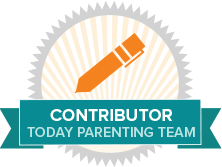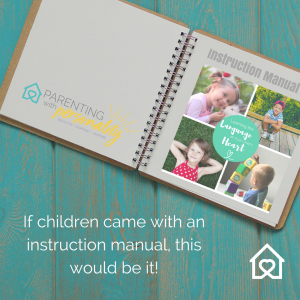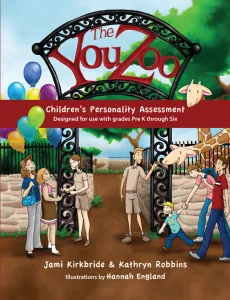
DMDD and Mental Health
Are you struggling with a child who exhibits excessive anger, rage, or emotional dysregulation? Are you experiencing a child with chronic irritability, consistent severe meltdowns, and excessive emotional reactions to small things? You may be searching for answers and finding words like mood disorder, disruptive mood dysregulation disorder, or DMDD. Mental health information is growing on this topic. I will share what you need to know now about DMDD mental health. You will get a quick and simple glimpse into the disruptive mood dysregulation disorder symptoms, DSM-5 criteria for DMDD diagnosis, treatment ideas for DMDD, and a couple tips for navigating a DMDD diagnosis with your child.
First things first, you are probably here because you are familiar in some way with dysregulation, a child with excessive anger or rage, issues with anxiety, mood disorder, depression, or some other mental health issue. Information shared here is NOT intended to replace seeking medical attention. In fact, I encourage you to please, seek good and informed medical attention. I am not intending to offer treatment or to diagnose. Knowing this information allows you to discuss concerns with a medical professional, have a basic understanding of some of the issues that could be addressed, and be prepared to both ask and answer questions concerning your child’s issues and care.
Dysregulation—Child Meltdowns
Parents often enter this discussion using the words tantrums and meltdowns but then quickly realize that we are discussing behaviors on the extreme end of this spectrum. DMDD would be recognized as severe tantrums, severe meltdowns or rages with your child. There is a high likelihood that it is impairing their ability to function well at home, school, or with friends.

You might find that some people are quick to focus on the behavior and think it should or could just be punished away. It is more helpful to imagine these severe meltdowns or rages as communication. The child may be experiencing a full body overwhelm to something they are struggling to interpret or understand. The child is feeling a threat in their environment. It may be something that is happening, something they are feeling, or something that they are simply unable to process. This perceived threat is what sets their amygdala (emotional control center of the brain when in danger) into action.
The types of responses associated with DMDD are beyond typical tantrums or meltdowns. They are severe and intense, often better classified as rages versus normal age-appropriate meltdowns. They include these full body responses with excessive mood, emotional, or physical reactions. This may be evidenced by seeing the child’s pupils dilate, the jaw clench, nostrils flare, a defensive stance or posture, baring of their teeth, loud verbal responses, and even a super strength.
As a result of these intense rages, you and your family are experiencing significant upheaval in your home and consequently, relationships too. Please see the safety suggestions below to help ensure safety during these rages. You may be researching for answers or trying to seek help for your child and family concerning these rages, and you may have discovered DMDD this way.
What is DMDD?
You may have heard DMDD referred to and not even known what those letters stand for. So let’s start there. DMDD is an abbreviation for Disruptive Mood Dysregulation Disorder. The National Institute of Mental Health says, “Disruptive mood dysregulation disorder (DMDD) is a childhood condition of extreme irritability, anger, and frequent, intense temper outbursts. DMDD symptoms go beyond a being a “moody” child—children with DMDD experience severe impairment that requires clinical attention.”
Understanding of DMDD has changed over time. Thankfully, it is beginning to be discussed, understood, and better treated as well. One of the most accurate ways DMDD has been explained, likens it to having your child’s Fight-Flight-Freeze response functioning in an over-reactive way. Not only is their response to threat over-reactive, but it gets stuck. When it is kicked in, the frontal lobe (decision making part of brain) cannot function as well. It can really impair a child’s ability to function in the school setting, make social connections, and form positive relationships with family members. It can complicate or prohibit them from forming friendships and being involved in activities. What might a parent notice if a child is considered to have issues with DMDD?

Disruptive Mood Dysregulation Disorder Symptoms
As a parent, you would notice that your child is chronically irritable. Numerous things in his day cause him to feel extra upset or even erupt, but more than likely his default setting looks pretty low, frustrated, and hard to please. You would probably be experiencing several intense meltdowns or rages per week and for some, even in a day.
These meltdowns would be intense and could be aggressive verbally, physically, or both. They include hitting, kicking, biting, insulting, cursing, threatening others, breaking things, destroying things, running or hiding, attempts to run away, or threats to harm self or others.
The eruptions happen after some small incident that other children might overlook or have a minimal response to. Their responses seem out of proportion both to the thing that happened, as well as to the response you would expect from a child their age.
As you might imagine, the medical community had to come up with a more accurate way to diagnose this disorder. While the labels may feel frustrating to parents, the medical community uses these criteria in order to uniformly treat and monitor change in those they work with. Thus, in 2013, they added the DMDD diagnosis to the Diagnostic and Statistical Manual (DSM-5)
.

DSM-5 DMDD Criteria
The DMDD Criteria set forth by the committee who oversees the DSM-5 is as follows:
A. Severe recurrent temper outbursts manifested verbally (e.g., verbal rages) and/or behaviorally (e.g., physical aggression toward people or property) that are grossly out of proportion in intensity or duration to the situation or provocation.
B. The temper outbursts are inconsistent with developmental level.
C. The temper outbursts occur, on average, three or more times per week.
D. The mood between temper outbursts in persistently irritable or angry most of the day, nearly every day, and is observable by others (e.g., parents, teachers, peers).
E. Criteria A–D have been present for 12 or more months. Throughout that time, the individual has not had a period lasting 3 or more consecutive months without all of the symptoms in Criteria A–D.
F. Criteria A and D are present in at least two of the three settings (i.e., at home, at school, with peers) and are severe in at least one of these.
G. The diagnosis should not be made for the first time before age 6 years or after age 18 years.
H. By history or observation, the age of onset of Criteria A-E is before 10 years.
I. There has never been a distinct period lasting more than 1 day during which the full symptom criteria, except duration, for a manic or hypomanic episode have been met.
J. The behaviors do not occur exclusively during an episode of major depressive disorder and are not better explained by another mental disorder (e.g., autism spectrum disorder, posttraumatic stress disorder, separation anxiety disorder, persistent depressive disorder [dysthymia]).
When seeking help for your child, it is helpful to know these criteria. You might even print out these criteria and take them to an appointment with your medical professional.

DMDD Diagnosis
Because this is a newer addition to the DSM-5, I want to encourage you to do your homework. I admit that having been in private practice before, and during the course of my education, I had not worked with or even heard about DMDD. And I can tell you that many medical and mental health professionals have not. So please, do your research and know beforehand if your doctor or counselor is familiar with the condition or willing to do some research to learn more about it.
If you are concerned that this could be what your child is struggling with, please take time to view the Dr. Larry Fisher videos that talks both to parents and professionals on his extensive study and amazing finds in this area. Armed with this information you may be the one to ask your doctor about a possible fit for your child. This is a very helpful five-part video series.
It may be, that you visited a doctor or counselor and one of them has brought this up as a possible, or probable diagnosis for your child. I still encourage you to read, study, and learn. These videos can be very useful in digesting a DMDD diagnosis and what it might mean for your child.
A Common Misperception—DMDD vs ODD
Since this is a newer diagnosis, there are still many things that are being learned, along with some misperceptions that can easily be passed around. It is important to remember a child cannot be diagnosed with both DMDD and ODD (oppositional defiance). While they may carry some significant similarities, the motivation of behavior, is very different.
In oppositional defiant disorder, the goal of the behavior is aimed at defying authority. Often, after an intense emotional outburst (physical or verbal aggression), a child diagnosed with DMDD cannot even remember what they said and did. They may experience some real upset, even to the point of self-hatred or thoughts of self-harm for what they did. They do not display this targeted defiance at authority, even though some of their outbursts may inadvertently involve authority.
There may be some overlap with other mental health issues, such as anxiety, depression, ADHD, sensory processing and executive functioning issues. Some of these children are even showing abnormal activity in their brain waves as well. So it is beneficial to do your homework and understand the different features of these issues and which ones might indeed overlap.

DMDD Treatment- Is there a medication for anger outbursts?
You may be wondering what you can do to help a child who has been diagnosed with DMDD. You might even be curious if there is a medication for anger outbursts! There will be a number of ideas for treatments and medications. You will be faced with many decisions about medication, therapies, and possibly care within a hospital or residential facility.
These decisions can feel overwhelming, and often get made in the midst of the turmoil, or in an emergency. This is why I reiterate that doing your homework and having a plan for times of crisis is important. Know the symptoms your child is experiencing and start being a student of them.
Because DMDD is a newer diagnosis, there is not an established standard of care yet. This means that there is not a typical course of care that has been established in the medical world. In fact, many of the prescriptions being used are actually an off-label use for that medication. That does not mean they are not FDA approved, just that it has not been an established treatment for that particular disease or disorder.

There are differing opinions on medications. And there are not many hard and fast answers as to the course of treatment for DMDD. There are some methods of treatment that are proving very successful, but you will probably find that these include working with lesser known or off-label use of medications. The protocol mentioned in the Dr. Fisher video is one such regimen that is bringing many children and families some incredible change and relief. As a result, many families are helped and changed.
One young child, after being put on this protocol remarked, “For the first time, my life doesn’t feel so hard. My thoughts about wanting to be dead are ALL gone! It’s like a miracle!”
It is likely that a combination of medications will be used which include anti-convulsants, anti-depressants, stimulants, anti-anxiolytics, sleeping medications, and others. Learning about the different classes of medications, what they do, and how they may interact can be an arduous task. This is another reason it’s imperative that you become both a student of your child and their behavior, as well as the possible medications that can make a change in their health. The video addresses some of these specific medication concerns and questions. And I will leave that for the medical professionals to address.

Other DMDD Treatment Options
Not every doctor will be aware of the advances in this diagnosis or the useful treatments. If you haven’t already, you will quickly learn that you will have to be an active driver and diligent advocate for what your child needs. Your child will benefit greatly if you sharpen those skills necessary to speak up, question those who are professionals, and persist to get the information you need to take action.
Getting a second opinion is perfectly fine. Try to become more comfortable talking through even the tough or embarrassing stuff. You may feel outside your comfort zone, but this is where you may need to learn to be more confident and comfortable for this journey.
Treatment options you might discover as you research DMDD including the following:
- Medications
- Supplements and Vitamins
- Family Therapy
- Individual Therapy
- Neurofeedback or other computer programs
- Chiropractic
- Naturopathic
- Occupational or Physical Therapy (if sensory issues are involved)
- Parent Education
- DBT or other specialized therapy and more
It is helpful to remember that your child will gain most from therapy when they are more stabilized. So contrary to what you may find in some research, you may want to seek a medical professional and consider starting on some medications to help your child stabilize and function better. When their brains and bodies have become a bit more balanced, they are better able to make changes and implement tools and strategies that can bring about success.
Parents can often be referred for parent training or education. It can feel insulting if you feel that this recommendation comes with the assumption that you don’t know what you are doing. But I’d like to reframe this differently. You are parenting a child that needs to be helped, handled, and understood in ways that are very specific and different. This may be different than a neurotypical child, and even your other children. Learning specific methods, tools, and tips will be a huge asset to this new and challenging journey. Embrace the help.
You may find individual counseling or parent coaching helpful as you learn different strategies to calm yourself and help your child learn to regulate in the process. Raising a child with these needs can be very exhausting and overwhelming. Seeking help is not a sign of weakness, rather a sign of strength and knowing that receiving help can allow you to be more effective in assisting your child.

DMDD Support
In addition to help, you will need support. This journey may be harder than any road you have traveled before. Some have likened it to being in an abusive relationship, except, it is with a child, and you are unable to walk away. Realize the depth of the needs, hurts, and struggles, for your child, you and your entire family. Give yourself and your child a lot of grace for the journey. Along with grace, bathe yourself in some consistent support.
There are excellent support groups online. DMDD Support, Parents of Children With DMDD, and Matthew’s Kids (for those using the specific Dr. Matthews protocol) are three such groups on Facebook that can assist parents in learning more about this mental health diagnosis and how it differs from other diagnoses. In the safety of these groups, you will find others who are living a reality similar to yours. You can talk about things that you are experiencing that might feel like taboo topics in other parenting groups. Other’s experiences and input can be a great way for you to learn and also help you as you speak with professionals.
Reading other’s stories helps you realize that there are those who are in a better place and worse place than you and most importantly, that you are not alone. You will also find others who are journeying ahead and offer inspiration for where you are headed. The help and knowledge that others share will be a wealth of information from those who know this best…those who are living, learning, and loving their child through it.
For those who are on this journey, you may often feel alone. I want you to know there are others who understand and appreciate the heartache and pain you have experienced. Maybe this poem I wrote and shared here before can bring you a glimmer of hope on the hard days.
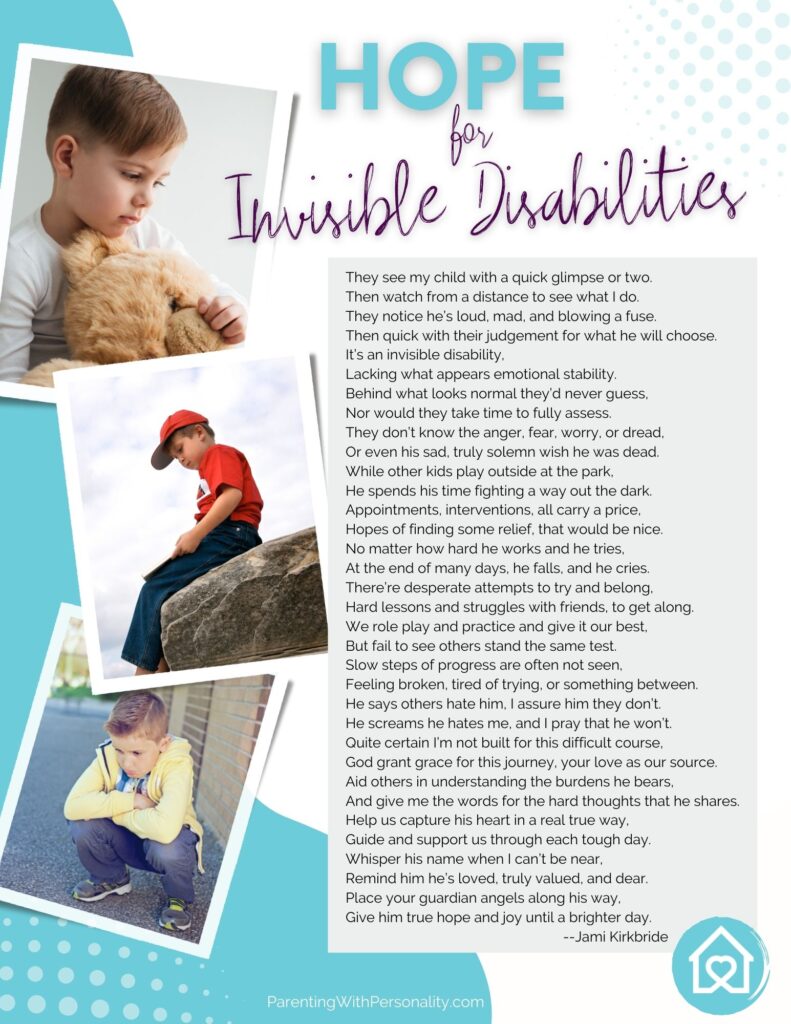
A Helpful Resource As You Learn About Severe Meltdowns and Rages
Perhaps you are looking for some practical help and resources as you start or even continue your journey. You might find this video that I recently recorded about meltdowns helpful if your child is struggling with this.
Remember, the meltdowns you experience with your child are on the extensive and intense end of the spectrum. These rages affect you, your child, and your family in many ways. The tools in this video will help you navigate making a safety plan and identifying some of your child’s triggers. In this way, you might be able to anticipate and plan for your responses.
You might be feeling a bit overwhelmed and wondering what your first steps might be. Here are some ideas on where you can begin finding help:
- Watch the Meltdown Video above and print out the planning form and trigger list
- Watch the Dr. Fisher Videos (one found above and other four on YouTube)
- Join support groups online (such as those mentioned)
- Learn more about the Dr. Matthew’s protocol (Trileptal and Amantidine-information may be found in some DMDD support groups)
- Seek medical professional about possible medications or diagnosis
- Find support, practical resources, or coaching for parenting challenges
- Decide when and where you might seek counseling or therapy for your child
Suggestions for Safety With DMDD
The above video provides some good ways to identify triggers and make a plan to handle your child’s intense meltdowns or rages. Making a plan with your child can help you understand what your child might need and how to best protect everyone involved. Here are some additional tips for safety during these times the child is raging:
- Avoid trying to reason or discuss things
- Assume a safe but non-threatening posture (sitting if possible)
- Offer a cold glass of water (plastic cup) to stimulate nervous system
- Keep words few, calm, and quiet
- Clear child to a location apart from others or remove others
- Limit other stimulus (sights, sounds, touch, smells, movement, etc.)
- Avoid touching the child if at all possible, unless you must restrain to protect them or someone else
Some parents are trained in restraining their child, but this is used as a last resort, since attempting to use force may cause them to dysregulate and rage even further.
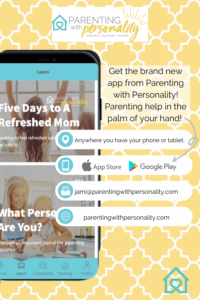
Other Useful Resources from Parenting With Personality
Hopefully, the meltdown video will give you some basic knowledge as you begin to understand your child’s behavior, intense emotional responses, and severe meltdowns or rages. The printables mentioned in the video will help you identify your child’s triggers as well as make a plan for how to handle things when your child is dysregulated and raging. The printables mentioned in the video are available on the Parenting With Personality App under parenting resources.
The free Parenting With Personality app is downloadable on Apple Store and Google Play. The printables mentioned will help you make a plan for before, during, and after meltdowns so you can figure out the methods that your child might respond best to. One of the most useful features on this app is the monthly membership which can help you deal with some of the more challenging aspects of parenting a child with emotional dysregulation and issues such as DMDD.
Each month a new topic will be introduced, such as mealtime madness, sibling squabbles, chore-time challenges, school struggles, holiday hassles, and much more. Through this membership, you will learn a specific step-by-step approach to handling your child in a way that builds connection, even through the tough stuff. The structure of this approach will help both you and your child know what to expect and build trust as you work through the challenges with a plan and purpose in mind. Let Parenting With Personality help you through the stress and the struggle to calm, confident, connection!

When you download the free app, you also receive a free course to help you find some refreshment, perspective, purpose, and a plan as a parent. The workbook and videos in this course might help you find a better and healthier perspective if you’ve felt drained in this process of parenting a child with these needs. You can’t forget to take care of you too!
Keep your eyes open, as there will soon be a new site, Revolutionize DMDD. I will provide the link when it is up and functioning. I have been very impressed with the people that represent the upcoming site and all they offer in the support groups online. I am confident this will be a great resource to direct you to.
This can be a difficult, and even heart-breaking course to travel. Please know you don’t have to do it alone. My heart’s desire is to help parents experiencing the stress and the struggle to find their calm, confidence, and connection with their child. I am here for you. You can do this!



